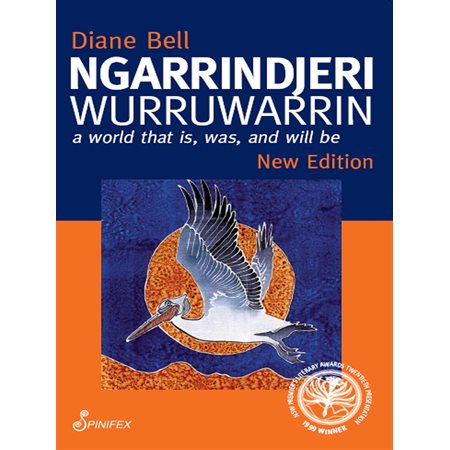In Ngarrindjeri Wurruwarrin, Diane Bell invites her readers into the complex and contested world of the cultural beliefs and practices of the Ngarrindjeri of South Australia; teases out the meanings and misreadings of the written sources; traces changes and continuities in oral accounts; challenges assumptions about what Ngarrindjeri women know, how they know it, and how outsiders may know what is to be known. Wurruwarrin: knowing and believing. In 1995, a South Australian Royal Commission found Ngarrindjeri women to have ?fabricated” their beliefs to stop the building of a bridge from Goolwa to Hindmarsh Island. By 2001, in federal court, the women were vindicated as truth-tellers. In 2009, the site was registered, but scars remain of that shameful moment. In the Preface to the New Edition, Diane Bell looks to the world that ?will be”, where talented, committed Ngarrindjeri leaders are building the infrastructure for future generations of the Ngarrindjeri nation and challenging the very foundation of the State of South Australia. The Apology to the Stolen Generations in 2008 and its evocation of an inclusive ?us” has propelled the Ngarrindjeri on the path to ?practical reconciliation”. But progress has been uneven. Petty politics, procrastinations and prevarications stand in the way of its realisation. Diane Bell writes as an insider who is clear about the bases of her engagement with her Ngarrindjeri friends and colleagues. The story will continue to unfold and Diane Bell will be there. There is unfinished business.
In Ngarrindjeri Wurruwarrin, Diane Bell invites her readers into the complex and contested world of the cultural beliefs and practices of the Ngarrindjeri of South Australia; teases out the meanings and misreadings of the written sources; traces changes and continuities in oral accounts; challenges assumptions about what Ngarrindjeri women know, how they know it, and how outsiders may know what is to be known. Wurruwarrin: knowing and believing. In 1995, a South Australian Royal Commission found Ngarrindjeri women to have ?fabricated” their beliefs to stop the building of a bridge from Goolwa to Hindmarsh Island. By 2001, in federal court, the women were vindicated as truth-tellers. In 2009, the site was registered, but scars remain of that shameful moment. In the Preface to the New Edition, Diane Bell looks to the world that ?will be”, where talented, committed Ngarrindjeri leaders are building the infrastructure for future generations of the Ngarrindjeri nation and challenging the very foundation of the State of South Australia. The Apology to the Stolen Generations in 2008 and its evocation of an inclusive ?us” has propelled the Ngarrindjeri on the path to ?practical reconciliation”. But progress has been uneven. Petty politics, procrastinations and prevarications stand in the way of its realisation. Diane Bell writes as an insider who is clear about the bases of her engagement with her Ngarrindjeri friends and colleagues. The story will continue to unfold and Diane Bell will be there. There is unfinished business.
